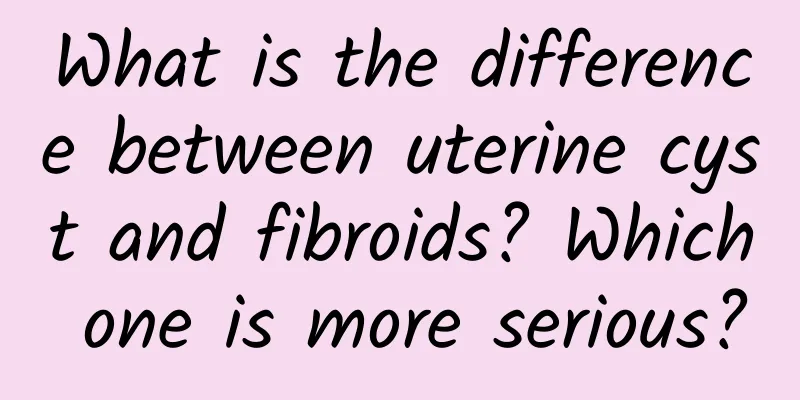What is the difference between uterine cyst and fibroids? Which one is more serious?

|
Uterine adenoma and fibroids are common gynecological diseases that are easy to confuse people. So what are the differences between them? Which one is more serious? Let's find out together. Uterine adenoma and fibroids are two different gynecological diseases with different causes and lesion sites. Uterine adenoma refers to cystic lesions caused by endometriosis, while fibroids are tumors of the uterine myometrium, which are composed of smooth muscle cells. There are certain differences in the causes of the two. The symptoms of uterine adenoma and fibroids are also different. The main symptoms of uterine adenoma are irregular menstruation, dysmenorrhea and infertility. The main symptoms of fibroids are increased menstrual volume, prolonged menstruation, dysmenorrhea, and compression of the urethra and rectum, causing frequent urination, urgency, constipation, etc. Uterine adenoma and fibroids also affect fertility. Uterine adenoma can affect the normal shedding and migration of the endometrium, leading to infertility or habitual miscarriage. Fibroids can affect embryo implantation and development, increasing the risk of infertility. As for which one is more serious, it cannot be simply compared. Because each person's situation is different, the severity is also different. Only through a comprehensive evaluation and comprehensive analysis by a professional doctor can an accurate answer be given. The treatments for uterine adenoma and fibroids are also different. For uterine adenoma with mild symptoms, you can try medication and improve your lifestyle, such as maintaining a good lifestyle and eating a healthy diet. For cases with severe symptoms or infertility, surgical treatment may be required, such as adenectomy or hysteroscopic surgery. For fibroids, the main treatments include medication, interventional therapy, and surgery, depending on the location, size, and age of the fibroids. Although both uterine adenoma and fibroids are gynecological diseases, there are obvious differences between them. Uterine adenoma is mainly caused by endometriosis, and the main symptoms are irregular menstruation and infertility; while fibroids are tumors of the uterine myometrium, and the main symptoms are menstrual abnormalities and compression of related organs. Which one is more serious depends on the severity of the disease and the impact on reproductive function. Therefore, if related symptoms occur, you should seek medical attention in time and receive professional doctor examination and diagnosis so that appropriate treatment measures can be implemented. |
<<: When will uterine fibroids be removed? When will uterine fibroids be removed?
>>: What can I do to check for uterine fibroids?
Recommend
What causes cervical erosion in women?
What is cervical erosion in women? 1. Unclean sex...
Can cervical erosion be treated during breastfeeding?
The treatment of cervical erosion during lactatio...
Black fungus diet recipes to detoxify and get a good figure
To lose weight through diet, there are three most...
Too thin to get pregnant? Doctor: Insufficient body fat may lead to ovulation
Many people want to give birth to a dragon baby i...
8 factors that cause irregular menstruation. Irregular menstruation requires maintaining good living habits
If women of childbearing age are under long-term ...
Pay attention to the precautions after abortion to control the condition
With the improvement of living standards, people ...
2 types of vaginitis caused by improper dressing
When it comes to vaginitis, people often associat...
What is the problem of scanty menstruation?
Small menstrual flow may be a problem that many f...
New Taipei City catches the most illegal advertisements claiming to be weight loss foods
Illegal food, drug, and cosmetic advertisements a...
Is back pain normal after miscarriage?
Artificial abortion generally refers to artificia...
Heart failure does not necessarily mean pump failure! Pay attention to low cholesterol, high fiber diet
If the heart has a weak pump, it is often conside...
What are the consequences of going directly to work after an abortion?
Going directly back to work after an abortion may...
Metabolic slimming method helps control weight! Keep in mind the "3 Don'ts and 3 Dos" principles and lose weight easily
The quality of human metabolism is one of the mos...
Have you weighed yourself? Be careful, obesity will increase the risk of 11 types of cancer!
On February 28, 2017, the British Medical Journal...
Symptoms of irregular menstruation
Menstrual irregularity refers to abnormalities in...









